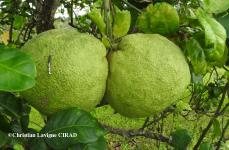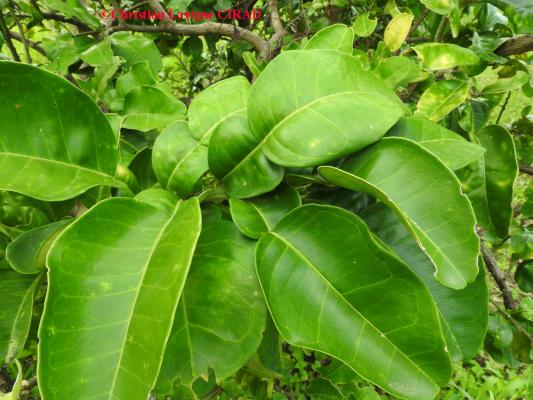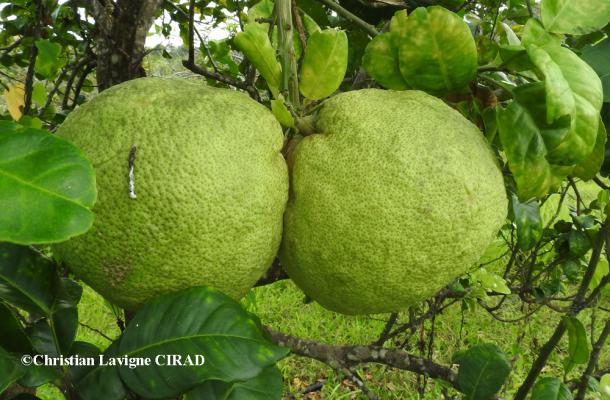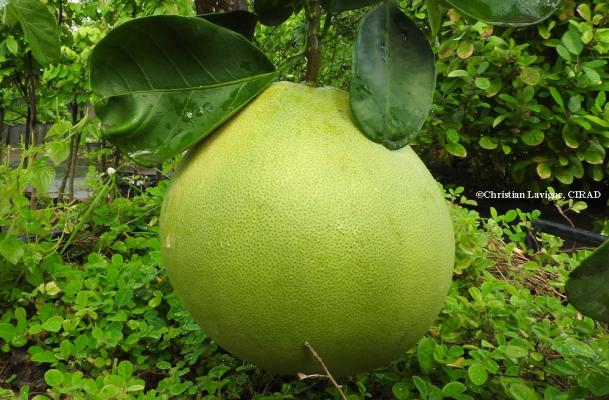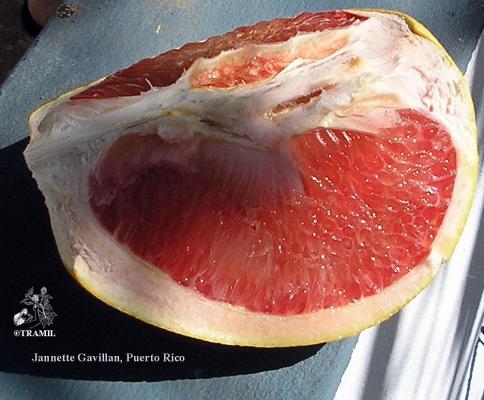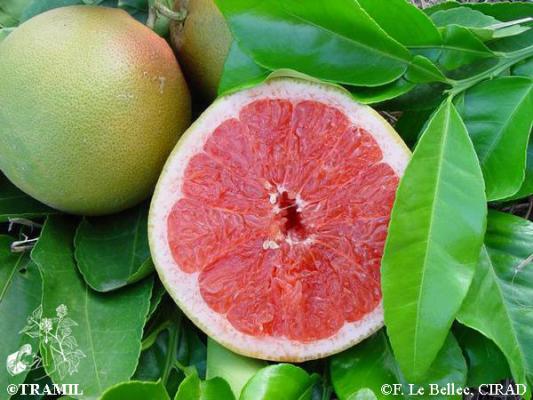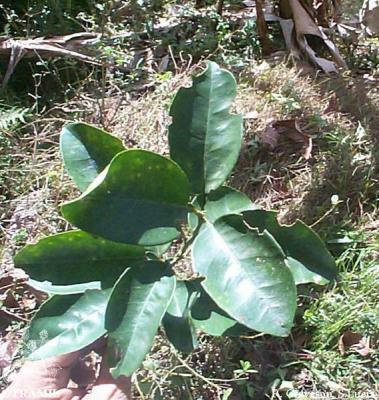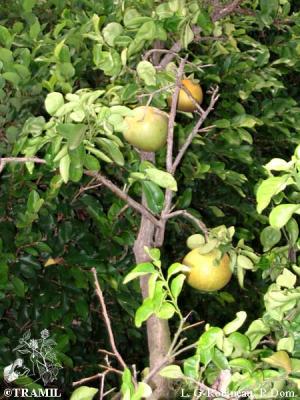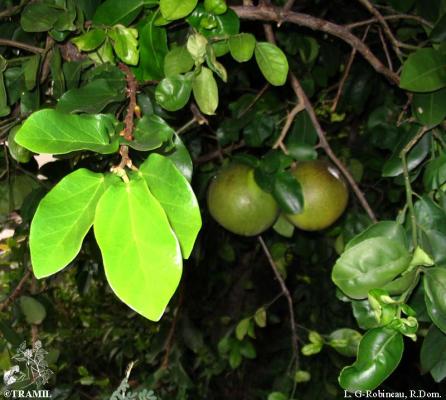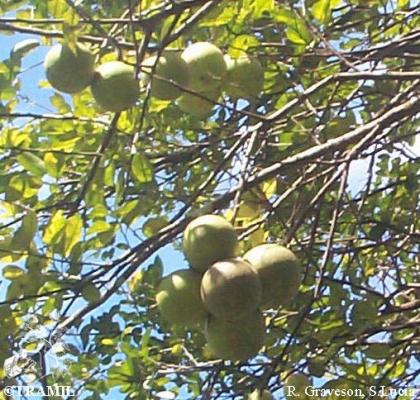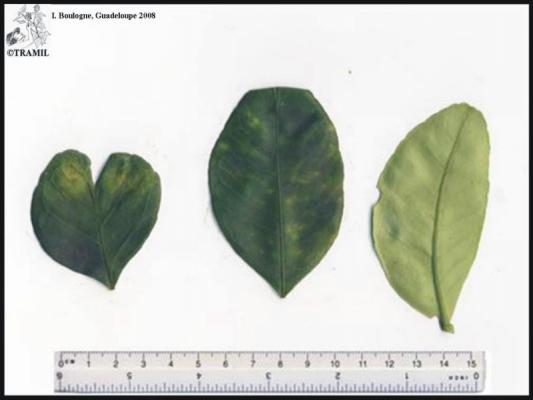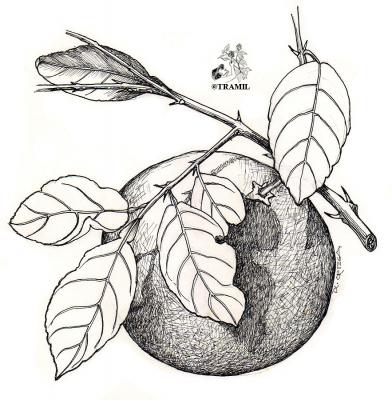Citrus maxima
Vernacular names
(In territories with significant traditional TRAMIL use)
Haiti:
- chadek
Geographical distribution
Native to Malaya, nowadays cultivated in tropical and subtropical regions.
Botanical description
Tree up to 9 m high, armed with thin thorns. Ovate or elliptic-ovate leaves of 10 to 20 cm in length, slightly pubescent on the underside; broadly winged petiole. Large, solitary flowers or in axillary clusters with wide, white petals; stamens 20 to 25; globular ovary with very long capped stigma. Globose or oblate fruit, 10 to 15 cm in diameter, pale yellow, acidic.
Voucher(s)
Germosén-Robineau, 951, JBSD
Pharmacopoeia
Ed.3References
1 WENIGER B, ROUZIER M, 1986
Enquête TRAMIL. Service Oecuménique d’Entraide SOE, Port au Prince, Haïti.
2 JIMENEZ S, 1996
Tamizaje fitoquímico preliminar de la hoja de Citrus maxima. Trabajo TRAMIL. Departamento de Farmacia, Facultad de Quimica Farmaceutica, Universidad de Antioquia, Medellín, Colombia.
3 POTDAR VH, KIBILE SJ, 2011
Evaluation of antidepressant-like effect of Citrus Maxima leaves in animal models of depression. Iranian J of Basic Medical Sciences 14(5):478-483.
4 CHAVERRI M, GARCIA-GONZALEZ M, 2013
Toxicidad aguda dosis repetida, en ratones, de la decocción liofilizada de hoja de Citrus maxima. Informe TRAMIL. LIPLAMED. Depto. de Fisiología, Escuela de Medicina, Universidad de Costa Rica, San Pedro, Costa Rica.
5 KUNDUSEN S, GUPTA M, MAZUMDER UK, HALDAR PK, PANDA SP, BHATTACHARYA S, 2011
Exploration of in vivo antioxidant potential of Citrus maxima leaves against paracetamol induced hepatotoxicity in rats. Der Pharmacia Sinica 2(3):156-163.


